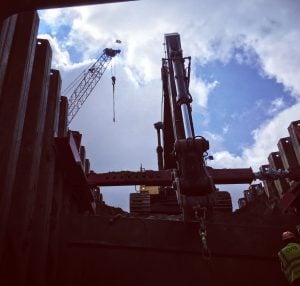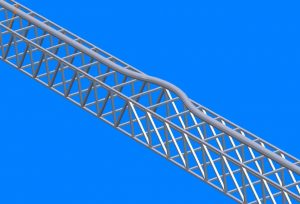How important are employees? That could be a tough question. How do you measure importance? Is it the revenue generated for the company? Perhaps it is the amount of money that is saved or never spent. What about the sales representative who brings in all that business for the company? She is the one that makes the company successful. Wait a minute; the sales manager provided all that guidance and advice so the scales reps could be successful. That would make the sales manager the important one. Or is it the president of the company? Without the vision and direction, the company would never be where it is today.
When it comes to scaffolding, I think there are a lot of important employees. Sure, you have to have sales representatives, managers and officers. But you also need the employees who do the physical labor of repairing equipment, loading trucks and delivering materials. In fact, there is one employee that seems to be overlooked too often. This is the individual whose judgment is relied upon by scaffold users every day. This is the individual who is exposed to potential hazards that most people would never ever experience in their lives, not even once. This is the individual who is expected to be a qualified and competent person while also being an expert in soils, structures and construction techniques. This individual is expected to know all the OSHA standards, not just the scaffolding standards, and is expected to perform his job in all kinds of weather conditions. And finally, this is the individual who is blamed when the scaffold isn’t finished, in spite of the fact that often he has no control over scheduling, and many times is first on the project and the last one off the project. This person is your scaffold erector.
Think about it. The erector is responsible for making sure the scaffold platform is complete. The erector is responsible for making the scaffold conform to the design and ensure that all the parts work properly. It is the erector who makes sure the foundation is correct and the access is sufficient. How often is the scaffold used by workers who never give it a second thought, standing on a platform at great heights to get their work done, never considering what it takes to provide the platform?
Erectors get no respect. If the job uses more labor, its their fault. If the scaffold isn’t completed on time, it’s their fault. If the scaffold isn’t dismantled on time, yep, its their fault. While I have to admit that at times it very well is the erector’s fault, too often it is the estimator or the scheduler or the designer or the manager who should be taking the blame. Think about it. Have you ever erected scaffolding on the side of a building in below freezing weather? How about erecting a scaffold in the middle of a refinery in the middle of August in Houston, Texas? (I have to admit that I haven’t done that one but I can tell you that just standing on a scaffold in the middle of a refinery in August is enough, much less having to build it!)
What kind of support do we give these employees who do some of the toughest work in construction? Well, we do give them the tools so they can assemble the equipment. Big deal. What kind of training do we give them? Do we teach them what the applicable standards are? Do we provide them with basic engineering principles so they don’t have to guess? Do we teach them how handle equipment so they don’t beat up their bodies by the age of thirty? Do we really give them the tools and equipment so they can be more productive?
What has the industry done to support scaffold erectors? Have we examined the cause of erector injuries? Do we know how erectors get hurt, how they fall, and yes, how they die from jobsite accidents? No we don’t. I doubt we know much more abut erectors and the real hazard exposure than we did in 1970, when OSHA was enacted. That’s 37 years we have had to gather data and statistics to help us formulate an effective job hazard analysis for erectors. We squandered that opportunity and other similar opportunities to improve the safety of the scaffold erector. We have not significantly improved the means and methods of scaffold construction nor have we recognized that professional scaffold erection is a skill that few possess. Building a scaffold doesn’t require a doctorate in quantum physics; it does, however, require a determination to work safely in many adverse environments with minimal support. Very few other jobs in construction subject employees to the conditions that scaffold erectors experience.
Think about that the next time you look at a scaffold or better yet, as you climb a scaffold. You trust your life to an individual who cares enough about you to make sure you are safe. Do you care as much about him?














